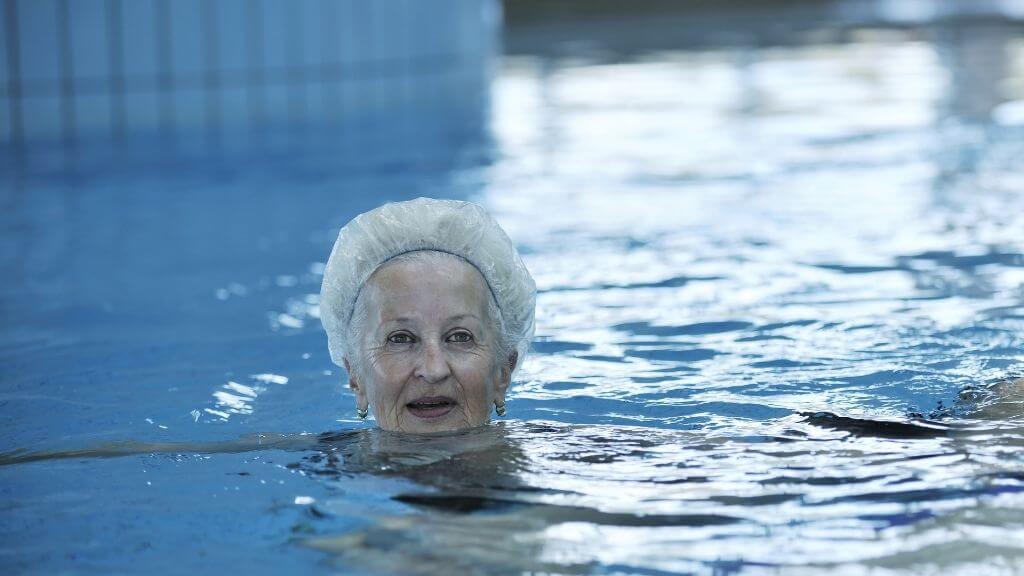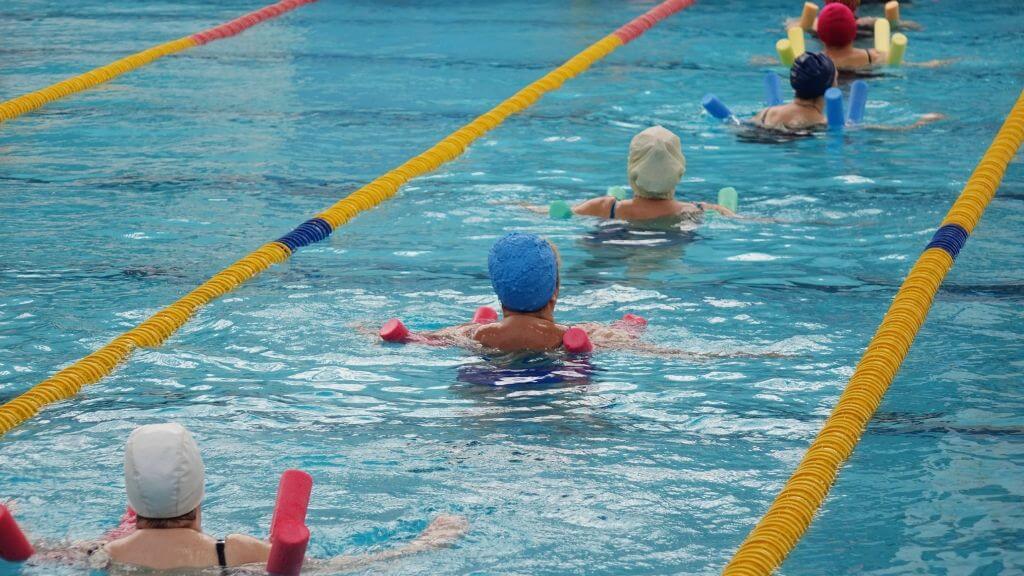6 Health Benefits of Jumping in the Pool on Swim a Lap Day
7 minute read
Are you always looking for a reason to celebrate? How about celebrating a day that has you splashing around in a pool?
June 24 is Swim a Lap day. It’s designed to get you up from your desk, off the couch, and into the pool. Swimming is great exercise, and it’s a lot of fun.
There are also several health benefits that come from regular swimming, especially for people who have health problems that make other forms of exercise difficult or painful.
Health Benefits of Swimming
One of the best things about swimming is that it’s an affordable form of exercise. Forget expensive gyms, drill sergeant-like personal trainers, pricey equipment, and classes; all you need to swim is a body of water, an appropriate suit, and your own body.
It’s also an excellent way for the whole family to workout, from the grandparents down to the littlest ones. So, what benefits can you get from swimming?

1. Works Your Whole Body
From head to toe, swimming is a workout. Swimming uses a wide range of muscle groups, and they’re used in different ways. The most frequently used muscle groups include:
♦ Core and low back muscles: keeping the body streamlined and moving forward (or backward) uses muscle strength in your core and lower back.
♦ Deltoid and shoulders: the shoulder and deltoid muscles help move your arms and hands when swimming.
♦ Forearms: your forearms pull you through the water, giving you propulsion.
♦ Upper back: your upper back muscles work hard to help stabilize your shoulders and upper body.
♦ Glutes and hamstrings: these muscles are really working hard, they have the responsibility of propelling you through the water and keeping you balanced.
♦ Abs and obliques: your “gut muscles” help rotate the body when you’re swimming freestyle or backstroke.
♦ Hip flexors: the best kicks are compact and steady, both of which you couldn’t achieve without your hip flexors.
2. Strengthens Heart and Lungs
Any time your muscles get a good workout, your heart and lungs are also working hard. An article in Harvard Health Publishing takes a deeper look at how your heart benefits from swimming.

They highlight two studies from the Cooper Clinic in Dallas that show that swimming can help your body use oxygen more efficiently. Swimming trains the body to breathe better, as seen by resting heart rates and breathing rates.
They also point to the relaxation and meditative effects of swimming. There’s a soothing effect associated with swimming that compares to relaxation or meditation, both of which can bring about cardiovascular benefits.
3. Safe Exercise for Some
Swimming is gentle on your joints, which makes it ideal for resistance training. It’s also versatile in working out different sets of muscles; from just walking against a current to competitive butterfly and everything in-between. This makes it the ideal workout for people with some medical conditions, both permanent and temporary conditions (like pregnancy).
Not only does swimming serve as a good low-impact way to exercise, but it can reduce pain for people with chronic disability and improve recovery times for people who are on the mend.
In one study on swimming as an exercise for people with osteoarthritis, it was concluded that regular swimming reduced joint pain and stiffness, improved muscle strength, and functional capacity.
| Related: Water Exercise: The Perfect Activity for Natural Arthritis Relief |

4. Burns Calories
Burning calories and losing weight can be the first step to a healthier lifestyle. As an example, a 160-pound person burns about 423 calories while swimming for an hour at a low or moderate pace, if they up the pace they can burn up to 715 calories.
That same person would only burn about 314 calories walking for that same hour at a pace of 3.5 miles per hour. Yoga for an hour would burn 183 calories while the elliptical trainer might be able to burn 365 calories.
5. Improve Sleep
If you have trouble sleeping, swimming might be a better choice than popping a sleeping pill. A study looking at aerobic exercise in older adults with insomnia points out that the people who exercised did have an improvement in sleep quality, which included duration, latency, and efficiency. They also had reductions in daytime dysfunction, depressive symptoms, and improvements in vitality.
It must be noted that this study did not include swimming, specifically, but because swimming is an aerobic activity, it should provide similar sleep benefits.
6. Elevates Mood
A study exploring the effects of aquatic exercise on people with dementia determined that aquatic exercise intervention reduced their behavioral and psychological symptoms while also improving their well-being. While this study only looked at people with decreased mental capacity, it has long been known that being active in a variety of different ways can lead to mental health benefits and an elevated mood.

Succinctly put, all exercise, not just swimming, can improve mood and decrease feelings of depression, anxiety, and stress.
The Bottom Line
While Swim a Lap day is a great excuse to take some time out of your day and enjoy the water and play, one day of swimming is not going to change your life. Once you experience how fun and invigorating it can be, you’ll want to make it a regular habit, and your life will definitely be forever changed.
Swimming on a regular basis is an excellent form of exercise as it delivers a powerful caloric burn and works your body inside and out without the impact on your joints. Swimming exercises are also versatile, you can change your stroke to work different muscles, give as much or as little effort to the activity as you want. You can swim as a solo activity, or you can join others for some aquatic exercises that are team based.
For a day or a lifetime, you’re sure to enjoy swimming if you dive right into Swim a Lap day and have some fun splashing around.












